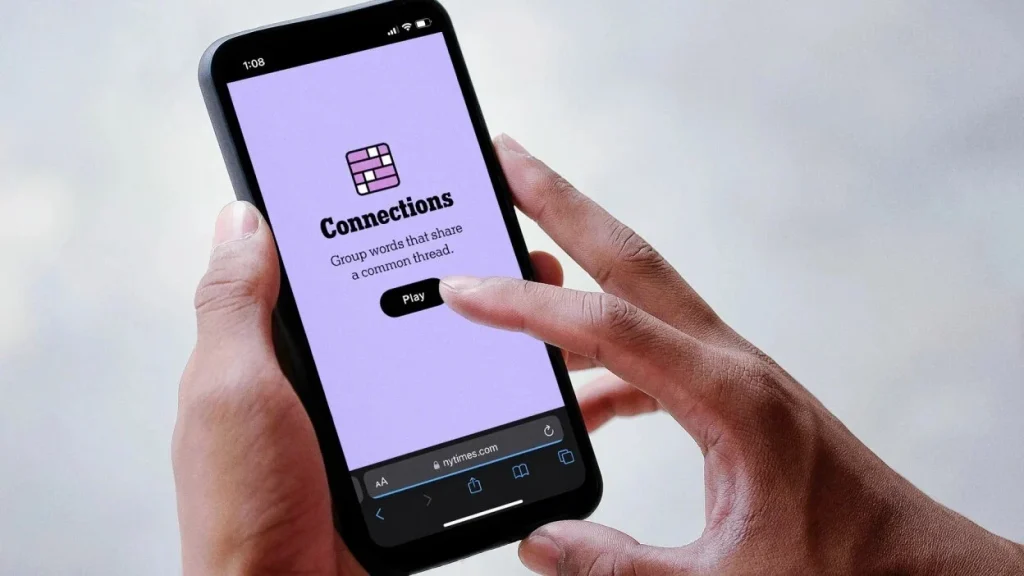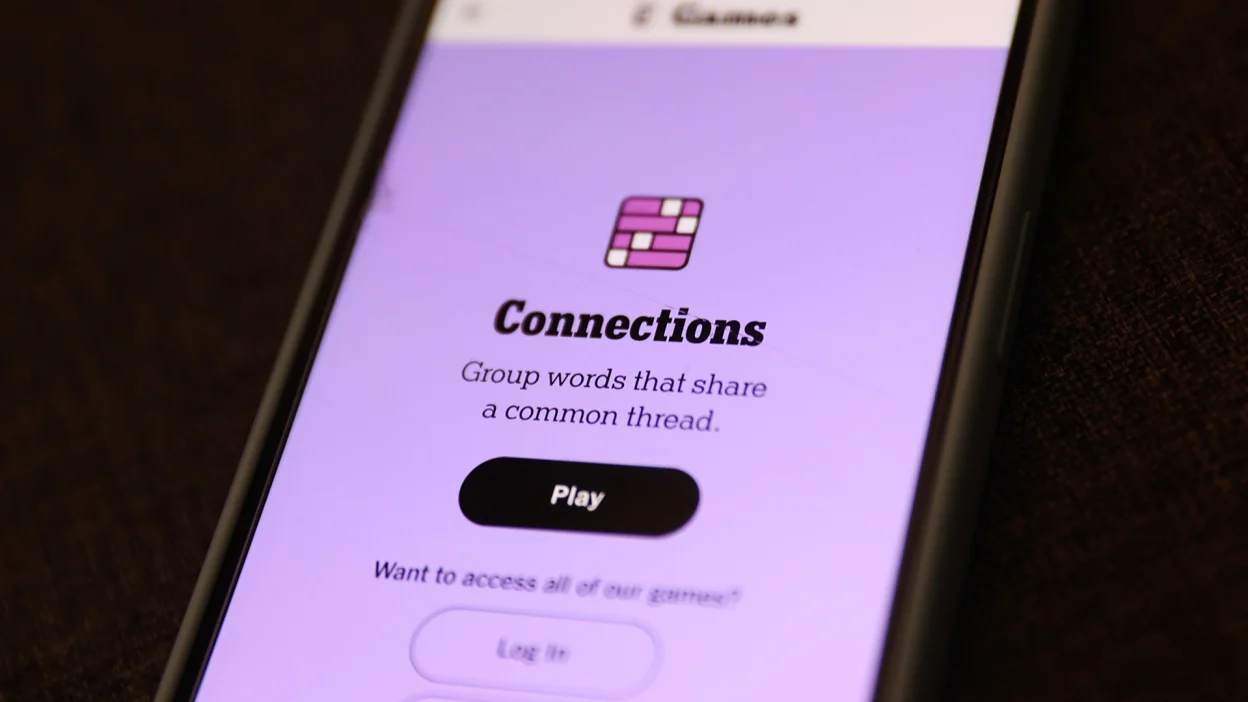The NYT Connections puzzle has rapidly become one of the most talked‑about daily word games. Many players find themselves stuck on challenging categories, looking for guidance—but without wanting the full answers spoiled. That’s where Connections Hint Mashable comes in.
Mashable offers daily hints (non‑spoiler nudges) tailored to help players break through difficult puzzles. In this article, you’ll get a deep dive into what Connections Hint Mashable is, how to use it, strategies to get better, and everything you need to maximize your puzzle success.
What Is “Connections Hint Mashable”?

What Is NYT Connections?
- NYT Connections is a daily word puzzle from The New York Times that presents 16 words. Your job is to group them into 4 sets of 4 — each set shares a hidden theme.
- The challenge lies in spotting subtle or abstract connections, avoiding red herrings, and managing limited mistakes.
- Each group is often color-coded by difficulty: yellow (typically easiest), green, blue, and purple (typically hardest).
What Does “Connections Hint Mashable” Mean?
- “Connections Hint Mashable” refers to the daily hint articles published by Mashable that accompany the NYT Connections puzzle.
- These hints aim to provide helpful clues without outright giving away the answers, allowing you to solve as much as you can yourself.
- Mashable’s approach is to give layered guidance—starting from broad hints, then gradually getting more specific as needed.
- These hint articles often include a quick introduction, category clues, sometimes context or word‑association reasoning, and (if you scroll far enough) the full answers for those who need them.
Why Players Rely on It
- It strikes a balance between help and challenge — you still get the thrill of solving most of the puzzle yourself.
- The hints are timely (published daily) and match the puzzle’s structure.
- Over time, you can use Mashable’s hints as learning tools: you’ll begin to see patterns, themes, and tricks the NYT puzzle makers use.
Structure & Types of Hints from Mashable
The Layered Hint Format
Mashable typically organizes hints in a graduated fashion:
- Broad or Thematic Clue
- A soft clue about what the category might be (e.g. “things found in your kitchen” or “colors you see outdoors”).
- Designed to steer without revealing specific words.
- Contextual or Supplemental Clue
- More background or explanation that refines the hint (e.g. “these are often used for mixing, measuring, cooking”).
- Helps eliminate broader possibilities.
- Optional Direct Clue / Near Spoiler
- For those who are still stuck, they may give a clue that’s close to the actual words, but ideally still leaves room for deduction.
- Often the full answers are given at the end of the article—for those who want to verify or can’t solve it.
Difficulty Tiers and Hint Sensitivity
- Because each puzzle includes groups of differing difficulty (yellow, green, blue, purple), the hint for each group is calibrated to that group’s difficulty.
- The yellow group’s hint is often easier and more concrete; purple’s hint may be more abstract or require lateral thinking.
- Mashable aims to give hints appropriate to the difficulty, not too obvious for easy groups, and not too cryptic for harder ones.
Examples of Hint Types
- Category Hints: e.g. “These are all beverages”
- Associative Word Hints: e.g. “Think of words that link to cooking utensils”
- Indirect or punny hints: Sometimes hinting via metaphor or word‑play rather than direct category naming
- Reverse hints or negative hints: Indicating what isn’t the connection to help eliminate wrong paths
How to Use Connections Hint Mashable Effectively

Step‑by‑Step Strategy
- Scan All Words First
Before looking at hints, read all 16 words and see if any obvious groups jump out (e.g. four colors, four animals, etc.). - Read the Broad Hints
Check Mashable’s top hints (for each category) to get a sense of what the themes might be. - Start with the Easiest Group (typically Yellow)
Use the easiest hint and your own intuition to lock in the simplest group first. That reduces complexity for the rest. - Use Contextual Hints to Help Middle Groups
As you proceed, compare hint context to your remaining words. See which ones match more tightly. - Apply Elimination and Cross-Check
If a word seems to fit more than one group, test and reassign as needed. Use elimination (if you already used three words for a category, the fourth must fit). - Only Use the More Specific Hint / Scroll for Full Answers When Stuck
Don’t reveal more than needed. Mashable preserves suspense by placing full answers later.
Tips and Cognitive Techniques
- Think in multiple dimensions: Words may connect by meaning, function, sound, or cultural reference.
- Don’t overcommit early: Be ready to reassign words if later hints contradict your grouping.
- Use pattern recognition: Over time, note which kinds of categories recur (e.g. months, foods, musical instruments).
- Learn from past puzzles: After revealing full answers, reflect on how the hint pointed you there.
- Avoid fixation: If one grouping doesn’t fit, be willing to backtrack.
- Balance speed and thought: Don’t rush too fast into assignments; sometimes pausing helps you see a better connection.
Common Challenges & How Mashable Helps Overcome Them

Ambiguous Words with Multiple Meanings
Many words can fit into more than one possible theme (e.g. “bass”: fish or sound). Mashable hints often disambiguate by giving context.
Red Herrings or Distractor Words
Puzzle creators may include words that seem like they belong to an obvious group but actually belong elsewhere. Mashable’s hints help you notice when a word is a trap.
Abstract or Obscure Themes
Purple-level groups sometimes use themes that are not immediately intuitive. The hint may gently nudge toward the hidden link (e.g. mythological names, literary references).
Limited Mistakes Allowed
Since you can only guess wrong a few times before penalty, hints reduce risk. Use them before guessing if unsure.
Comparative View: Other Hint Sources vs. Mashable
| Source | Style of Hints / Help | Pros | Cons |
|---|---|---|---|
| Mashable | Layered non‑spoiler hints, gradual escalation | Balanced, reliable, teaches patterns | Some puzzles may still be too tough despite hints |
| Reddit / Forums | Crowd‑sourced hints, community discussion | Many perspectives, fast updates | Spoilers risk, inconsistent quality |
| Puzzle Blogs | In‑depth breakdowns, often full solutions | Great analysis, detailed explanations | May reveal too much too soon |
| NYT Official (if available) | Minimal hints, official guidance | Trusted, accurate | Often too sparse to help much |
Mashable distinguishes itself by walking the fine line: giving guidance without spoiling enjoyment, and helping build your own skills over time.
Read: Cost of Common Eye Treatments
Read: Types of Snow and Ice
Read: Navigating Multiple Offers
FAQs
Here are frequently asked questions about Connections Hint Mashable:
Q: Where can I find the daily Connections Hint Mashable article?
You can visit Mashable’s games section daily, where they publish the hint article for the current NYT Connections puzzle.
Q: Are the hints the same as NYT’s official hints?
No. Mashable’s hints are independent, often more explanatory and player‑friendly, designed to assist without fully revealing answers.
Q: Does Mashable always include the full answers?
Yes — but full answers are usually placed farther down the page, so you can choose whether to see them or not.
Q: Will relying on Mashable hints reduce my ability to solve puzzles on my own?
Not if used wisely. The hints are meant as guidance, not solution replacement. Use them selectively, and over time your pattern recognition and deduction skills will improve.
Q: Is the Connections puzzle free?
Yes, the daily NYT Connections puzzle is free to play. However, access to archives or premium features might require NYT subscription. (This can change, so always check the NYT games policy.)
Q: Which hint is most useful — the broad one or the specific?
Start with the broad hint first. Try to solve with minimal help. Use more specific hints only when stuck. This method builds your skills while preserving challenge.
Conclusion
Connections Hint Mashable is a powerful ally for NYT Connections players — offering hints that push you onward without giving everything away. When used with strategy, these hints can help you solve more puzzles, reduce frustration, and sharpen your pattern recognition and logical thinking. Over time, you may find yourself needing hints less, or using fewer from each article. Whether you’re a newcomer or seasoned player, leveraging Mashable’s hints smartly will improve your puzzle game and deepen your enjoyment.
